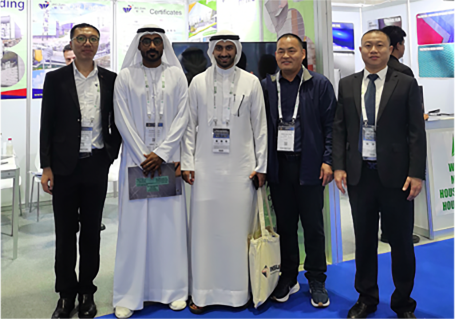
Dec . 19, 2024 21:00 Back to list
Hydroxypropyl Methyl Cellulose Applications and Benefits in Various Industries
Understanding HPMC Hydroxypropyl Methyl Cellulose
Hydroxypropyl Methyl Cellulose (HPMC) is a versatile and widely used cellulose derivative that plays a crucial role in various industries, particularly in pharmaceuticals, food, cosmetics, and construction. This non-ionic, water-soluble polymer has gained significant attention due to its unique properties and functionality. In this article, we will explore the chemical structure, properties, applications, and benefits of HPMC.
Chemical Structure
HPMC is derived from cellulose, the most abundant organic polymer on Earth, found in the cell walls of plants. The modification process of cellulose involves the substitution of hydroxyl groups of the glucose units with hydroxypropyl and methyl groups. This etherification process results in a compound with varying degrees of hydroxypropyl and methyl content, leading to different viscosities and solubility characteristics.
Properties of HPMC
One of the standout features of HPMC is its ability to dissolve in cold water, forming a clear and viscous solution. This property makes it an excellent thickening agent. The viscosity of HPMC solutions can be adjusted by altering the concentration and the degree of substitution. Additionally, HPMC is known for its thermal stability and resistance to heat, making it suitable for various industrial processes.
HPMC is also characterized by its film-forming abilities, which allow it to create a protective barrier on surfaces. This property is particularly beneficial in the pharmaceutical industry, where it is used as a coating agent for tablets and as a binder in drug formulations. Moreover, its non-toxic nature and biocompatibility make it an attractive choice for applications that require safety and efficacy.
Applications
china hpmc-hydroxypropyl methyl cellulose

1. Pharmaceuticals In the pharmaceutical industry, HPMC serves multiple purposes. It is used as a disintegrant, binder, and film-coating agent in tablet formulations. Its controlled-release properties make it ideal for formulating extended-release medications, helping to improve patient compliance and therapeutic outcomes.
2. Food Industry HPMC is commonly used as a food additive (E464), where it acts as a thickener, stabilizer, and emulsifier. It enhances the texture and mouthfeel of various food products, including sauces, dressings, and gluten-free baked goods. Additionally, HPMC can help improve the shelf-life of food items by controlling moisture levels.
3. Cosmetics and Personal Care In cosmetics, HPMC is used for its thickening and binding properties. It is found in lotions, creams, shampoos, and gels, where it helps stabilize emulsions and improve product consistency. Its gentle nature makes it suitable for sensitive skin formulations.
4. Construction HPMC is utilized in the construction industry as an additive for cement-based products. It enhances the workability, water retention, and adhesion of mortars and plasters, ensuring better performance and durability of building materials.
Advantages of HPMC
The popularity of HPMC can be attributed to several advantages. It is non-toxic, biodegradable, and free from harmful solvents, making it an environmentally friendly choice. Its versatility allows it to fulfill various roles across different industries, thereby reducing the need for multiple additives. Additionally, HPMC’s ability to form films contributes to improved product performance, quality, and user experience.
Conclusion
Hydroxypropyl Methyl Cellulose (HPMC) is an essential ingredient used in multiple sectors, offering a blend of safety, efficiency, and versatility. Its unique chemical properties and ability to function as a thickener, binder, and coating agent have made it an indispensable component in pharmaceuticals, food products, cosmetics, and construction materials. As industries continue to evolve, the demand for sustainable and effective additives like HPMC is expected to grow, paving the way for innovative applications and formulations that enhance product quality and performance.
-
Versatile Hpmc Uses in Different Industries
NewsJun.19,2025
-
Redispersible Powder's Role in Enhancing Durability of Construction Products
NewsJun.19,2025
-
Hydroxyethyl Cellulose Applications Driving Green Industrial Processes
NewsJun.19,2025
-
Exploring Different Redispersible Polymer Powder
NewsJun.19,2025
-
Choosing the Right Mortar Bonding Agent
NewsJun.19,2025
-
Applications and Significance of China Hpmc in Modern Industries
NewsJun.19,2025







